Middle Back Pain
What is a Middle Back Pain?
Middle back pain refers to pain experienced in the thoracic region of the spine, spanning from the neck down to the lumbar spine. Formed of 12 vertebrae, this area of the back provides upper-body support and shields the spinal cord.
Various factors can provoke thoracic back pain, including poor posture, strained muscles, spinal injuries like herniated discs or spinal arthritis, and even stress. Sufferers may endure dull or sharp pain paired with stiffness, muscle tightness, or difficulty moving.
It’s important to seek medical care if mid-back pain persists, radiates, or impairs functioning. Additionally, other red flags like fever, numbness, or breathing struggles should be evaluated promptly. Treatment modalities can range from medication to physical therapy to chiropractics or possibly surgery when warranted.
The thoracic spine plays a vital role, in bearing weight and enabling range of motion. Looking after this region with proper strengthening, stretching, ergonomics, and posture can help reduce pain episodes. Being attentive to pain causes and utilizing appropriate therapies facilitates recovery from mid-back conditions.
Anatomy of the Thoracic Spine
The thoracic spine is made up of 12 vertebrae stacked on top of each other, along with discs between each vertebra that absorb shock and allow flexibility. Each thoracic vertebra (T1-T12) has unique features:
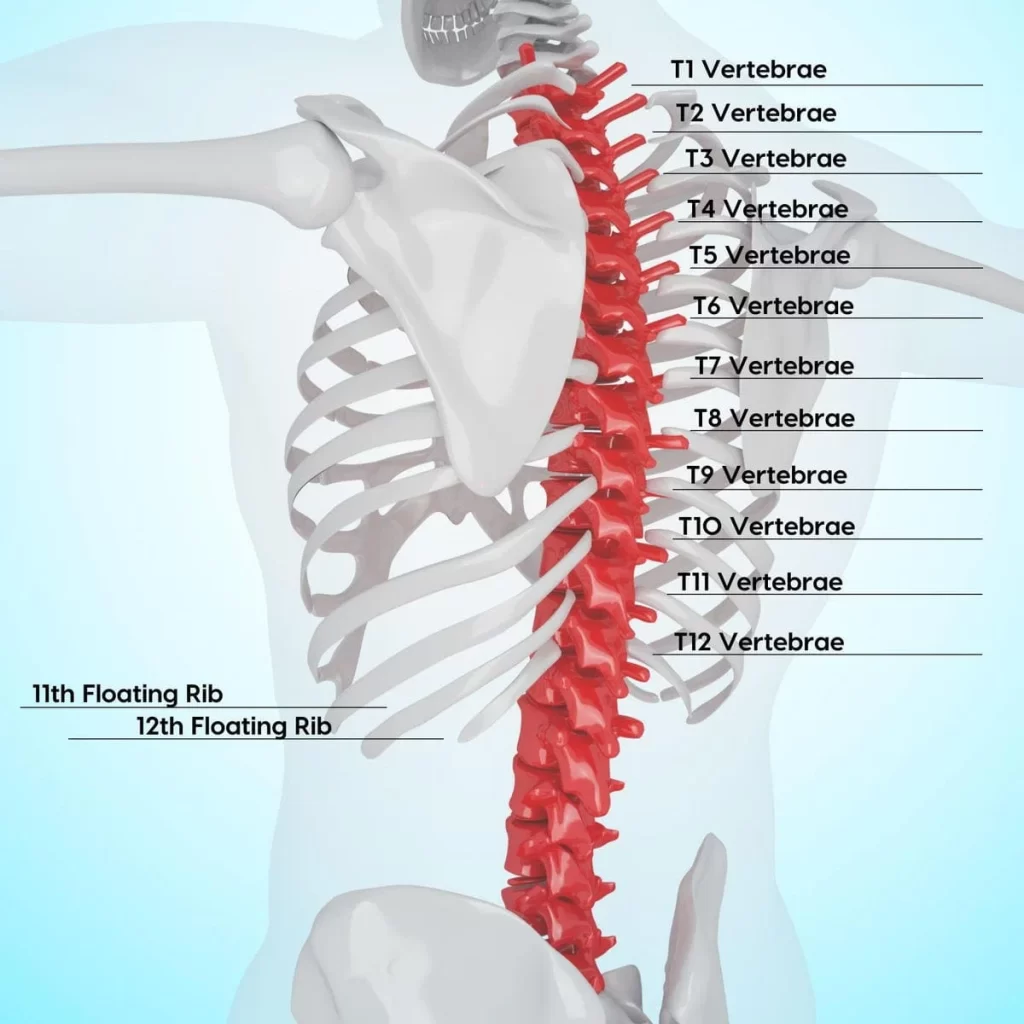
- The vertebral body is the thick, round section that bears weight and withstands compression
- Pedicles and laminae connect to form the neural arch/vertebral foramen that houses and protects the spinal cord
- Spinous processes and transverse processes provide attachment points for muscles, ligaments, and tendons
- Facet joints align and link each vertebra together, enabling spinal movements
The sizes of the thoracic vertebrae differ moving down the spine, with T1 being small to allow neck rotation and T12 being much larger as it approaches the lumbar spine.
In between the vertebrae sit intervertebral discs, which cushion impact and act as spinal shock absorbers. These flexible discs have a tougher outer layer (annulus fibrosus) and a soft, gel-like inner core (nucleus pulposus).
The ribcage connects directly to the thoracic spine, one pair on each side for T1-T10 vertebrae. The ribcage plays a key structural role but also makes the middle back less mobile compared to other spinal regions.
Finally, an intricate network of muscles, tendons, and ligaments surround and support the thoracic region. These include:
- Multifidus muscles that extend and stabilize vertebrae
- Middle trapezius and rhomboids anchoring the scapula
- Serratus anterior that wraps under the shoulder blades
- Intercostal muscles between ribs breathing
This complex combination of bones, joints, discs, and soft tissues allows the thoracic spine to be extremely strong and stable but have limited front-to-back or rotational flexibility. Understanding this anatomy provides context on why mid-back pain can develop.
What are the causes of middle back pain?
- Poor posture leads to stress on the spine, causing back muscle pain. you slump, the muscles and ligaments in your back have to work harder to keep you balanced, leading to overuse and resulting inching and spasms in the middle back muscles.
- Obesity is also a contributing factor to middle back pain. There is a positive correlation between being overweight and experiencing back pain, including middle back pain.
- Muscle sprains or strains can occur from improper lifting of heavy weights. Sprains involve the pulling and stretching of ligaments while strains involve the pulling and stretching of muscles and tendons. These injuries can also happen from sudden jerks during movement.
- Injuries such as falls can also cause middle back pain, although they are less common compared to lumbar and cervical spine pain. Types of injuries that can lead to middle back pain include car accidents, blunt force trauma, sports accidents, and falls from heights or down stairs.
- Thoracic spine injuries can happen to anyone but are more common in older individuals than younger ones.
When you sense middle back pain after an incident, consult your doctor immediately.
- Herniated Vertebral Disk: A herniated vertebral disk occurs when the gel-like interior of a vertebral disk in your middle back presses against the outer layer of cartilage, putting pressure on a nerve. This condition is commonly known as a slipped or ruptured vertebral disk (PIVD) and can cause nerve pain, tingling, and numbness in the middle back region that may radiate to the leg.
- Osteoarthritis: Osteoarthritis (OA) is a degenerative bone disease that occurs when the cartilage surrounding joints breaks down, leading to bones rubbing against each other.
- Aging: Middle back pain typically affects individuals between the ages of 30 and 50. Age-related processes such as bone thinning, decreased synovial fluid between spinal joints, and loss of muscle mass can contribute to middle back pain.
- Fractures: Vertebral fractures often result from trauma, such as falls, car accidents, or sports injuries. These fractures can also occur in individuals with reduced bone density, such as those with osteoarthritis, and can lead to severe middle back muscle pain that worsens with movement. In some cases, fractures may cause incontinence, tingling, and numbness due to potential spinal cord involvement.
- Kidney Problems: Kidney issues can cause pain in the middle back, located under the rib cage on both sides of the spine.
- Lifestyle Factors: Lack of daily exercise can result in weak muscles, contributing to pain. Improper lifting techniques can also lead to middle back muscle pain.
- Osteoporosis: Osteoporosis is a type of bone degeneration disease that leads to brittle bones. It occurs when the body fails to produce enough new bone to replace bone loss.
- Mental Health Conditions: Depression and anxiety can increase the risk of developing middle back muscle pain.
- Scoliosis: Scoliosis is a condition in which the spine curves sideways, leading to uneven weight distribution across the back and causing middle back pain.
- Tumors: The presence of a tumor in the middle back can affect spinal alignment, putting pressure on surrounding structures such as nerves, muscles, and ligaments.
What are the symptoms of middle back pain?
Middle back muscle strains and sprains can cause a variety of uncomfortable and sometimes debilitating symptoms.
- Aching Pain – You may experience a generalized dull, throbbing pain in your mid-back area near where the muscle injury occurred. This happens because the damaged muscle fibers become inflamed.
- Sharp Pain – Any sudden movements or twisting can also trigger a more intense or stabbing sensation. The sharp pain usually indicates irritation around tendons, ligaments, or joint structures.
- Muscle Spasms – Spasms occur when the muscles involuntarily contract as a protective mechanism. Spasming muscles feel stiff, and tender and can provoke intense pain.
- Swelling – Damaged tissues often become swollen and enlarged. This leads to inflammation, stiffness, and soreness. Applying ice can help reduce swelling.
- Difficulty Moving – You may struggle with mobility, including bending, lifting objects, or fully expanding your rib cage to breathe deeply. The injured area will likely feel very stiff and tender with movement.
- Tenderness – Light touch to the muscles in the region of injury often causes marked pain and discomfort. Massage therapy can help relieve this eventually.
- Numbness or Tingling – Nerve compression related to bulging discs or spine issues can lead to sensations of numbness or tingling in your ribs, abdomen, or upper extremities. This warrants medical evaluation.
Being attentive to your symptom patterns will help guide appropriate treatment. Seeking prompt medical care is key for proper muscle injury diagnosis and recovery.
How to Diagnose Middle Back Pain
If you develop persistent or worsening mid-back pain, it’s important to seek medical attention to determine the underlying cause. Here are the common steps involved in diagnosing thoracic back pain:
Physical Examination
- Your doctor will visually inspect your spine from the neck down, looking for signs of injury, swelling, asymmetry, or malalignment. They will palpate (apply light pressure) along each vertebra and surrounding musculature checking for trigger points.
- Range of motion assessment and specific positions/movements that reproduce the back pain can help isolate affected structures. Lying flat or arched positions may also indicate spinal issues.
- A full neurological exam will be conducted to check sensation, reflexes, and muscle strength in the limbs, abdomen, and chest. Weakness, numbness or breathing struggles warrant further testing.
Imaging Tests
- Plain film X-rays provide initial images of the thoracic vertebrae, discs, and joints. X-rays best detect bone injuries, arthritis, or spinal curvature disorders.
- CT scans give cross-sectional 3D views of the thoracic contents including discs, spinal canal openings, and soft tissues using specialized equipment.
- MRI scans involve radio waves and strong magnetic fields to visualize spinal anatomy and pinpoint disc, bone, nerve, and ligament abnormalities without radiation. MRIs excel at imaging soft tissues.
Other Testing
- Nerve conduction studies check how well signals travel along nerve pathways related to sensation, movement, or organ function to pinpoint compression issues.
- Electromyography assesses electrical activity within muscles to evaluate muscle and nerve dysfunction patterns that can refer to pain.
Identifying the origin of thoracic back pain guides the proper management plan. Getting prompt attention optimizes recovery and reduces lasting mobility issues from untreated middle back injuries.
What is the treatment for middle back pain?
Home Care and Lifestyle Remedies
When experiencing pain in the middle back muscles, doctors typically advise following the RICE principle as either home or primary treatment.
- Rest: Doctors recommend taking a break from activities to relieve muscle pain.
- Ice: Applying ice to the affected area for 20 minutes can help reduce swelling and muscle pain. Remember to always use a towel between the skin and ice to prevent ice burns. Ice packs or frozen peas can also be used for ice therapy.
- Compression: Applying a compression bandage can help reduce muscle pain and swelling.
- Elevation: Placing a pillow under the legs when experiencing middle back pain can help reduce swelling. Keep track of your sleeping position as well.
Rest and Activity Modification – Avoid strenuous activity and rest the tender area to allow healing. Apply heat or ice for pain relief. Gradually resume normal movement as tolerated unless otherwise advised.
OTC Medications – Anti-inflammatory meds like NSAIDs (ibuprofen, naproxen) can ease swelling and pain short term. Acetaminophen is another analgesic option.
Posture and Ergonomic Correction – Address positioning issues when sitting, standing, or sleeping that contribute to mid-back pain. This also includes proper lifting mechanics.
Back Braces or Supports – Wearing a specialized thoracic brace or support belt can assist healing, promote good posture/alignment, and restrict painful spine motions.
Physical Therapy – Stretches, exercises, manual therapy, heat/ice modalities, and TENS therapy can relax muscles, build strength, and retrain proper movement patterns.
Medical Interventions
Over-the-counter pain relievers like acetaminophen (such as Tylenol), aspirin, or NSAIDs like ibuprofen and naproxen can be beneficial. If you are finding it difficult to manage your daily activities, your physician might recommend stronger pain medications or muscle relaxants. However, it is essential to exercise caution as certain prescription drugs can induce drowsiness and lead to dependence, such as hydrocodone/acetaminophen (Vicodin), oxycodone (Percocet), or other opioids.
For arthritis and chronic lower back pain, the antidepressant duloxetine (Cymbalta) may offer relief. In cases of nerve-related pain, doctors may prescribe antidepressants and anticonvulsants. Oral steroids are generally not advised for sudden low back pain.
If your primary care provider is unable to help you manage the pain, they may refer you to a specialist in back or pain management who may administer steroid injections or other medications directly into your back to alleviate the pain.
While injections and procedures in the spine area may provide temporary relief, they can be valuable in diagnosing the root causes of pain and supporting physical rehabilitation when conventional treatments fail. These interventions come with a cost and potential side effects, which should be thoroughly discussed beforehand. Often, a pain or back specialist may incorporate rehabilitation and counseling from non-physician professionals like therapists, counselors, and patient educators.
Surgery
Surgery is often considered a last resort option for most cases of chronic back pain, especially if you are dealing with a herniated disk or a pinched nerve originating from the spinal cord.
- During a diskectomy, where a surgeon removes all or part of the disk that separates your vertebrae, relief can be found from back pain caused by a misplaced disk pressing on a spinal nerve.
- Rhizotomy involves surgically cutting a nerve to halt the transmission of pain signals to the brain. While this procedure can alleviate symptoms stemming from severely damaged nerves and friction in spinal joints, it does not address issues like herniated disks.
- Microdiscectomy, usually performed using an operating microscope through a small incision, has become the standard surgical approach for lumbar disc herniation. It may also be a component of more extensive surgeries involving laminectomy, foraminotomy, or spinal fusion.
- In a laminectomy, a surgeon removes bone parts, bone spurs, or ligaments in the back to relieve pressure on spinal nerves, potentially leading to pain relief, although it can compromise the spine’s stability.
- Spinal fusion, frequently utilized for treating chronic nonspecific back pain with degenerative changes, entails connecting spinal bones (vertebrae) to minimize motion between them and nerve stretching limitations. However, it is unlikely to restrict your overall activity level.
Other surgical interventions are available for individuals experiencing persistent pain unresponsive to conventional treatments. Surgical sympathectomy, implanted spinal cord stimulators, and implanted spinal drug delivery devices are some of these alternatives.
A multi-modal plan combining activity/posture changes, medicine, therapy, and possibly braces or injections typically yields the best recovery results. Surgery is a last resort for specific spinal problems.
Physical Therapy Treatments for Middle Back Pain
Massage Therapy
- Massage involves hands-on manipulation of the soft tissues to relax muscles, improve blood flow, and relieve localized pain in the injured thoracic region.
- Common techniques like effleurage (gliding), petrissage (kneading), friction, vibration, and trigger point release are used to address muscle knots, adhesions, and stiffness.
- Massage lotion or oil reduces friction allowing the therapist’s hands to glide smoothly over the skin and apply adequate pressure during strokes
- Typical sessions last 30-60 minutes and focus on problem areas identified during the physical therapy assessment based on symptoms and palpation findings.
- Massage frequency is adjusted based on the individual’s relief and healing response but commonly ranges from 1-3 times per week.
Electrotherapy Modalities
Electrotherapy uses electrical impulses to achieve therapeutic effects like pain modulation or muscle re-education. Common modalities include:
- TENS (Transcutaneous Electrical Nerve Stimulation) applies low-voltage electrical currents through electrodes on the skin to block pain signals traveling to the brain.
- IFC (Interferential Current Therapy) delivers crossing medium frequency currents that penetrate deeper to relieve inflammation and swelling.
- Ultrasound uses high-frequency sound waves to generate deep heat and improve tissue healing, especially helpful for chronic back strains.
- SWD (Shortwave Diathermy) applies electromagnetic energy to deeply warm soft tissues, increasing blood flow and flexibility.
Routine use of massage techniques, electrotherapy, and exercise creates optimal movement recovery for middle back muscle and spinal dysfunctions.
Using Physical Therapy Exercises
An important component of a well-rounded treatment plan for middle back pain involves targeted strengthening and stretching via physical therapy exercises. Working under the guidance of a physical therapist or chiropractor ensures activities are safe and clinically tailored to your situation.
Incorporating specific thoracic spine exercises serves multiple key purposes:
- Improves strength and endurance capacity of the thoracic back muscles to better support posture and movement
- Increases flexibility allowing a fuller range of motion and reduced stiffness
- Promotes proper alignment to alleviate musculoskeletal strain patterns
- Encourages fluid movement patterns to avoid further injury
- Reduces tension build-up through relaxation of tight chest and shoulder musculature
- Decompresses the spinal joints, discs, and nerve spaces
We’ll overview some of the most effective exercises that physical therapists frequently prescribe to alleviate mid-back pain associated with overuse, poor ergonomics, disc problems, strains, and arthritis. A mix of stretching, joint mobilization, and low-impact strengthening sets the stage for ongoing back health.
Stretching exercises
Cat-Cow Pose
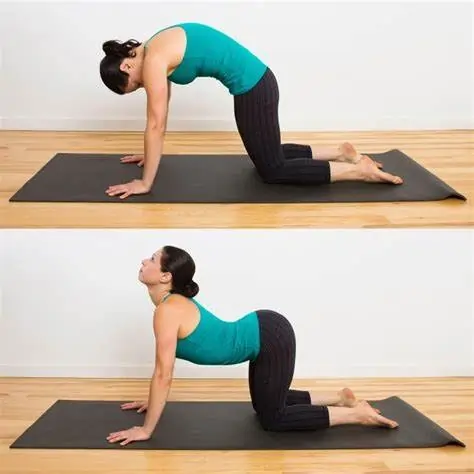
- Place wrists beneath shoulders and knees under hips while on your hands and knees. Keep your head and neck relaxed.
- As you inhale, arch your back toward the ceiling, lifting your sitting bones and chest while relaxing your belly (Cow pose).
- As you exhale, round your spine toward the floor, drawing your belly button in and pulling your back down while allowing your sitting bones to lift upwards (Cat pose).
- Move slowly between these two spinal positions for 8-10 rounds, synchronizing your breath and movement.
Seated Twist
- Take a seat on the ground and extend your legs straight in front of you. Bend right knee and cross right foot over to the outside of left knee.
- Place right hand behind sacrum with left arm stretched perpendicular to the bent right knee. Twist your chest and shoulders to the right.
- Anchor through your sitting bones and turn your head last to fully rotate the thoracic spine. Hold for 30 seconds & and repeat on the opposite side.
Cobra Pose
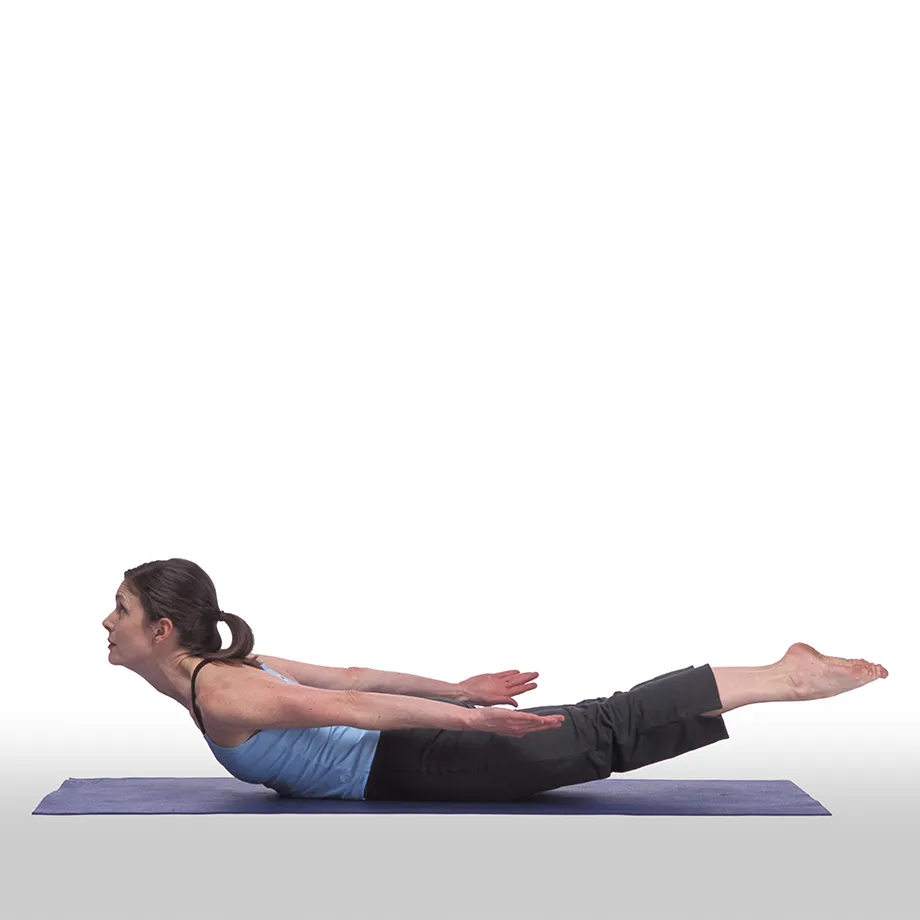
- Lie face down with palms by your lower ribs and, the tops of your feet on the floor. On an inhale, engage your back to lift your head, chest, and abdomen off the floor while keeping your pelvis anchored down.
- Feel a gentle backward bend through your mid and upper back. Avoid overarching lower spine.
- Hold for 5-10 breaths then lower back to the starting position. Repeat 3 times.
- Remember to move slowly and gently, breathing deeply throughout the movements. If you experience any sharp pain, stop.
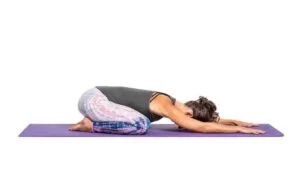
Child’s Pose
- Sit back on your heels while kneeling on the ground with your toes together. Slowly walk your hands forward as you bring your chest down towards your thighs.
- Let your chest sink to rest on the tops of your thighs and stretch your arms overhead with palms facing down. Feel a mild stretch along your mid and upper back.
- Hold for 30 seconds, focusing on long, deep breathing. Repeat 2-3 times. To intensify, reach your arms farther forward.
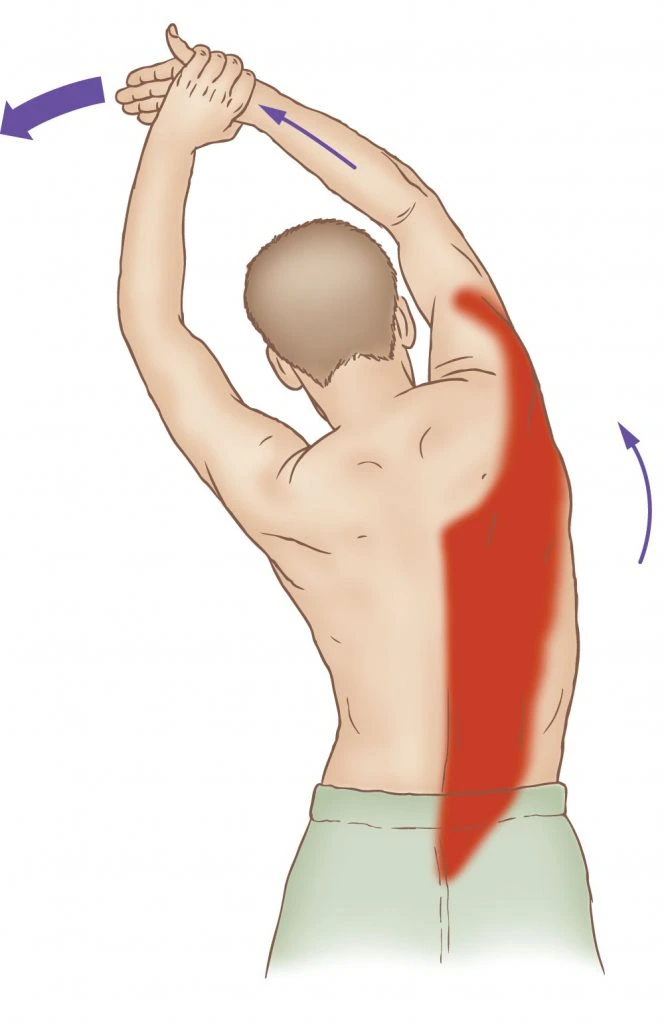
Latissimus Dorsi Stretch
- Stand upright and interlace your fingers behind your back, palms together. Lead with your knuckles to lift your hands away from your body.
- Keep your shoulders pressed down, engaging your shoulder blades as you straighten your arms. You should feel tension in the lats.
- Hold this stretch for 20-30 seconds. Shake out your shoulders and repeat for a total of 3 reps. For less intensity, hold a towel behind your back.
Always move slowly into stretches, avoiding pain or straining sensations. Perform after warming up the mid back muscles for best injury prevention. Stay mindful of good postural alignment throughout.
Strengthening Exercises
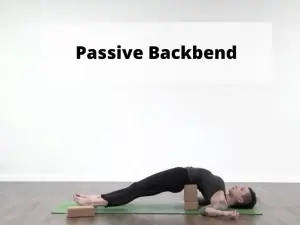
Passive Backbend
- Lie down on your back with your knees bent and arms extended by your sides, palms facing up.
- Press your mid back down towards the floor to flatten your spine against the ground. Engage your core.
- Have a partner/therapist apply gentle pressure with their hands to your chest/ribs to create a subtle backward bending of your upper spine for 10-15 seconds. Relax and repeat 5 times.
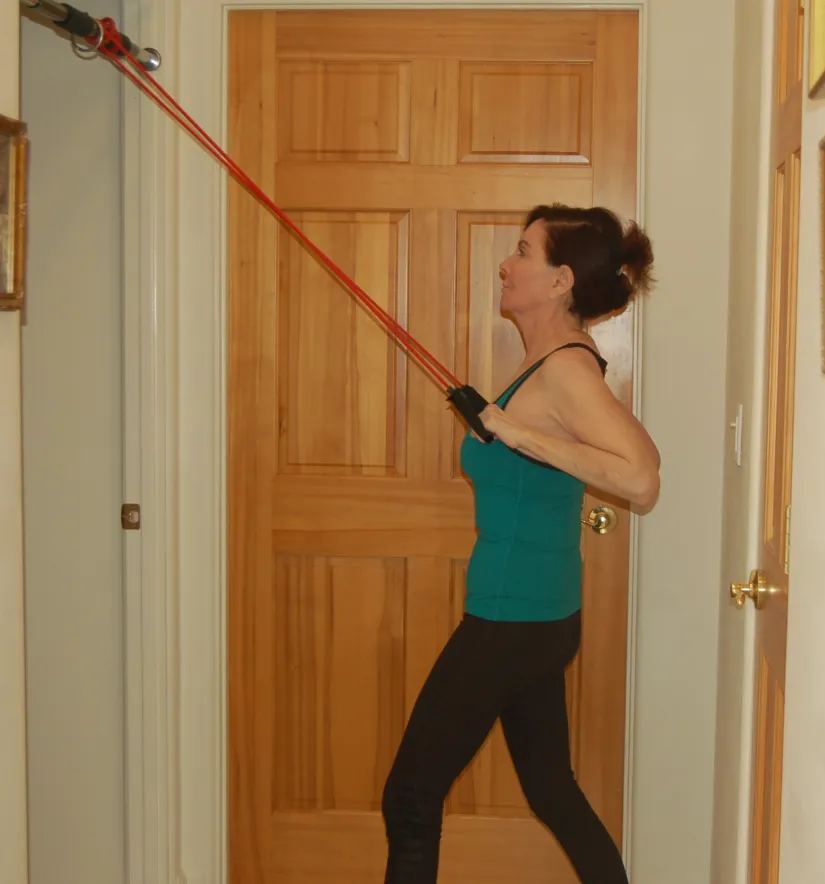
Resistance Band Pulls
- Secure a resistance band above head height and grasp handles, palms facing forward. Stand with feet hip-width apart.
- Pull the band down and back, bending elbows like rowing motion and squeezing shoulder blades together as you move your hands towards your armpits.
- Return to the starting posture slowly and without locking your elbows. Aim for 2 sets of 10-12 reps. Adjust resistance level as needed.
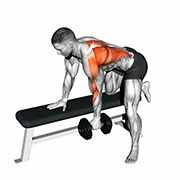
Dumbbell Row
- Put your right knee and right hand on a chair or bench. Grasp a dumbbell with the left hand hanging directly below the shoulder. Neutral spine.
- Initiate movement from the shoulders and pull the dumbbell straight up towards the ribcage. Lower back down with control.
- Repeat for 10-12 reps before switching sides. Start light to nail form before adding weight.
Bridge Pose
- With your feet hip-width apart and your knees bent, lie flat on your back. Keep your arms by your sides, palms down.
- Engage your glute and hamstring muscles to lift your hips toward the ceiling until your thighs and torso are in a straight line.
- Squeeze your glutes and engage your mid back to support your body weight, avoiding overarching your lumbar spine.
- Hold for 5 slow breaths, then lower hips back down with control. Repeat for 3 sets. Build endurance over time.
Opposite Arm/Leg Raise (Bird Dog)
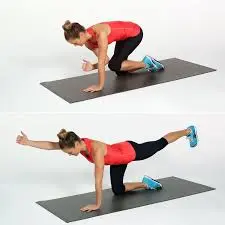
- Start lying face down on the floor. Bring your right arm forward next to your chest, palm down. Simultaneously lift the left leg a few inches off the floor. Avoid turning your neck.
- Hold for 2 counts before slowly releasing the arm and leg back down. Switch to lift the other arm and the opposite leg.
- Continue alternating limb raises to 10 times on each side. Keep chest and pelvis firmly planted, abs tight.
These challenging movements deeply engage and strengthen the stabilizing muscles of the mid back, hips, and core. Listen to your body and only progress gradually with low weights or intensity.
Proper Ergonomics for Middle Back Health
Ergonomic principles focus on adapting tasks and environments to promote efficient posture and movement patterns that reduce strain on the body. The following are some essential tactics to use:
Desk Set-Up
- Position your computer monitor directly in front of you rather than off to one side to prevent twisting. The screen’s top needs to be in line with your eyes.
- Use a document holder placed next to the monitor rather than looking down frequently to reference papers.
- Sit so that your knees and hips are 90 degrees apart. Thighs should be parallel to the floor. Put your feet up on a footrest or the floor.
- Chair height should allow your forearms to rest comfortably on the desk surface without hunching your shoulders up. Armrests can be used for support.
- Be mindful not to slouch. Maintain the spine’s natural curves by sitting up tall.
Lifting/Carrying
- Stand close to the load with a wide, balanced stance. Keep back straight and hinge at the hips and knees using your legs to lift.
- Avoid extending your arms straight out front to pick items up. Bring things in close to your torso. Move feet rather than twisting.
- For desk work, place commonly used items within easy reach zone to avoid repetitive bending or stretching.
- Improving workplace ergonomics reduces awkward positions that strain muscles and joints. Adopt healthy bio-mechanics to alleviate existing mid-back issues.
Home Remedies
- Heat therapy with a heating pad, warm shower, or hot pack helps relax tight muscles and increase blood flow. Use a moderate heat setting for 15-20 minutes at a time.
- Cold packs wrapped in a towel can ease localized swelling and inflammation resulting from muscle strains or spinal issues. Apply ice for 10 minutes a few times per day.
- OTC pain relieving gels or creams like Biofreeze or Voltaren can provide topical pain relief when gently massaged into tender spots on the mid back.
- An OTC muscle rub like Tiger Balm or Zheng Gu Shui, applied lightly to the area 1-2 times daily helps relieve muscle soreness.
- Oral supplements like turmeric, omega-3s, and glucosamine/chondroitin have anti-inflammatory effects to help manage thoracic back pain.
Prevention Tips
- Maintain proper posture by keeping ears stacked over shoulders and refrain from slouching or hunching for prolonged periods. Break up desk sitting.
- Sleep on your side or back using a cervical and lumbar support pillow to keep your spine aligned. Place a pillow under your knees if you sleep on your side.
- Regular stretching of the chest, shoulders, and mid back combined with low-weight strength training preserves mobility and stability.
- Handle heavy items safely by utilizing squatting and leg power instead of bending/twisting under a load.
- Conservative at-home measures coupled with smart body mechanics provide a solid starting point for relieving and preventing episodes of mid-back pain.
When to see a doctor
If you have a history of cancer or immune system issues, contact your doctor promptly in the following situations:
- Any injury or accident, such as sports injuries, car crashes, or falls, that results in back pain requires immediate medical attention. Even seemingly minor incidents could have caused more significant problems like fractures or herniated discs. Allow your doctor to assess you to rule out any potential long-term effects.
- If you experience a fever along with back pain, take it seriously as it might indicate a spinal infection requiring urgent medical care.
- Loss of bladder or bowel control combined with back pain should prompt you to call your doctor right away. This could signify conditions like spinal tumors, cauda equina syndrome, or lumbar spinal stenosis.
- If you notice new or worsening motor weakness, with or without numbness or tingling, it could indicate spinal cord compression.
- Unexplained weight loss of 10 pounds or more while experiencing back pain should be addressed by seeing your doctor promptly as it could signal a more serious underlying medical issue.
- Back pain that wakes you up in the middle of the night could be a sign of disk degeneration, a sprain, or a more severe condition like a tumor.
Summary
- Middle back pain, though often overshadowed by lower back pain, is a prevalent issue affecting many individuals. This article aims to shed light on the causes, symptoms, and management strategies for middle back pain.
- Middle back pain typically originates from the thoracic spine, spanning from the base of the neck to the bottom of the rib cage. Poor posture, muscle strain, spinal misalignment, and injury are common culprits. Symptoms may include stiffness, aching, sharp pain with movement, and limited mobility.
- Diagnosis involves a thorough examination by a healthcare professional, possibly including imaging tests like X-rays or MRI scans to identify underlying issues.
- Effective management strategies encompass a multifaceted approach. This includes rest, gentle stretching exercises, and posture correction. Physical therapy and chiropractic care can help alleviate pain and improve spinal alignment. Additionally, ergonomic adjustments in daily activities and workplace environments can prevent exacerbation.
- To treat pain and inflammation, a doctor may occasionally prescribe medicine or injections. However, surgery is typically reserved for severe cases or when conservative treatments fail to provide relief.
FAQs
What are some common causes of middle back pain?
Muscle strains and ligament sprains are frequent culprits often tied to poor posture and overuse issues. Arthritic changes in the small joints and discs also commonly provoke pain. Bulging or herniated discs, spinal stenosis, rib problems, osteoporosis fractures, and infections are other possibilities.
When should I seek medical care for mid-back pain?
See your doctor if pain persists over 2 weeks despite home treatment, interrupts sleep, causes neurological symptoms, or impaired breathing, balance, or coordination. Seek prompt care after falls or trauma as well.
What types of diagnostic tests evaluate middle back pain?
Doctors often start with in-depth physical exams checking the range of motion and neurological function. X-rays see bone issues while CT scans and MRIs better visualize soft tissues like disc bulges. Specialized tests check nerve electrical function.
Will I need surgery for my painful mid back?
The vast majority of thoracic back conditions improve with conservative treatment without surgery. Surgery like laminectomy or spinal fusion may be warranted if there is severe, degenerative spinal stenosis or instability causing neurological deficits.
What exercises help strengthen and stretch the middle back?
Targeted bodyweight back extensions, resistance band pulls, yoga poses like cat-cow and cobra, foam rolling, and other balanced flexibility and muscle-strengthening movements are typically prescribed.
How can I improve mid-back pain from poor posture?
Check in frequently with your seated and standing posture. Adjust workstations for proper height and positioning. Stretch tight chest and shoulders. Build strength to support the spine’s natural curves and prevent slouching or hunching forward.
What lifestyle changes prevent recurring middle back pain?
Daily posture checks, taking movement breaks, establishing an ergonomic workspace, sleeping on a supportive surface, maintaining a healthy weight, quitting smoking, managing stress, and exercising sensibly help ward off back pain episodes.
References
- Griffith, T. (2023, February 16). Understanding and Treating Middle Back Pain. Healthline. https://www.healthline.com/health/middle-back-pain
- Causes of Back Pain. (2016, February 2). WebMD. https://www.webmd.com/back-pain/causes-back-pain
- What You Can Do for Your Low Back Pain. (2016, November 22). WebMD. https://www.webmd.com/back-pain/what-helps-with-lower-back-pain
- Back Pain Tests. (2007, January 4). WebMD. https://www.webmd.com/back-pain/back-pain-tests
- Vaghela, D. (2023, December 13). Middle Back Pain Cause, Symptoms, Treatment, Exercise – Mobile. Mobile Physiotherapy Clinic. https://mobilephysiotherapyclinic.in/middle-back-pain/
- Leonard, J. (2023, October 16). Middle back pain: Causes and relief. https://www.medicalnewstoday.com/articles/321195

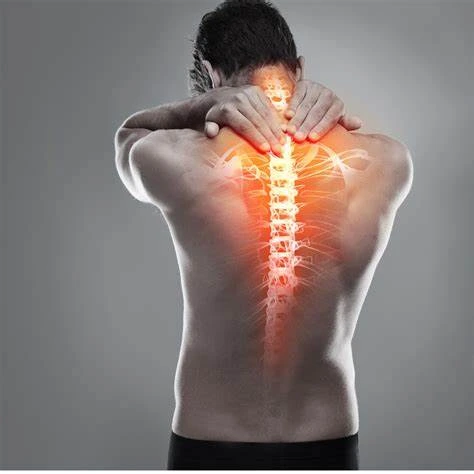
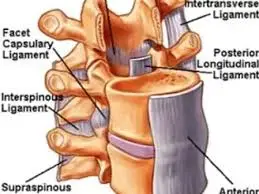
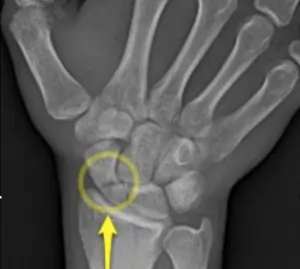
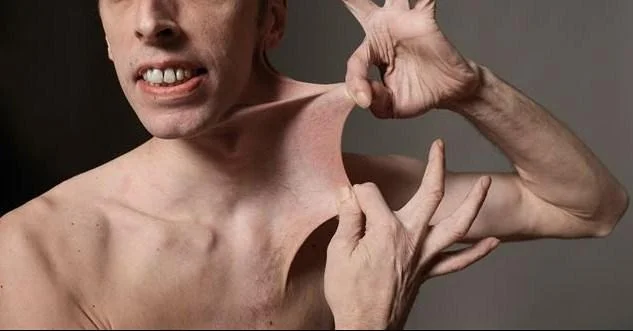
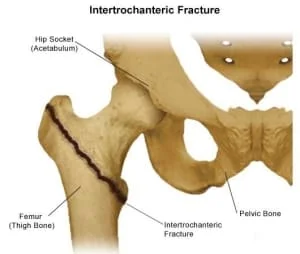
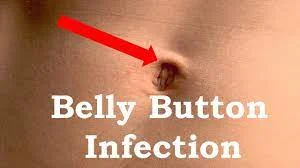
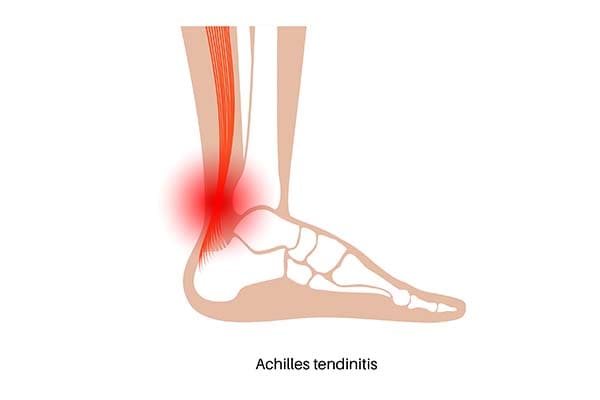
One Comment